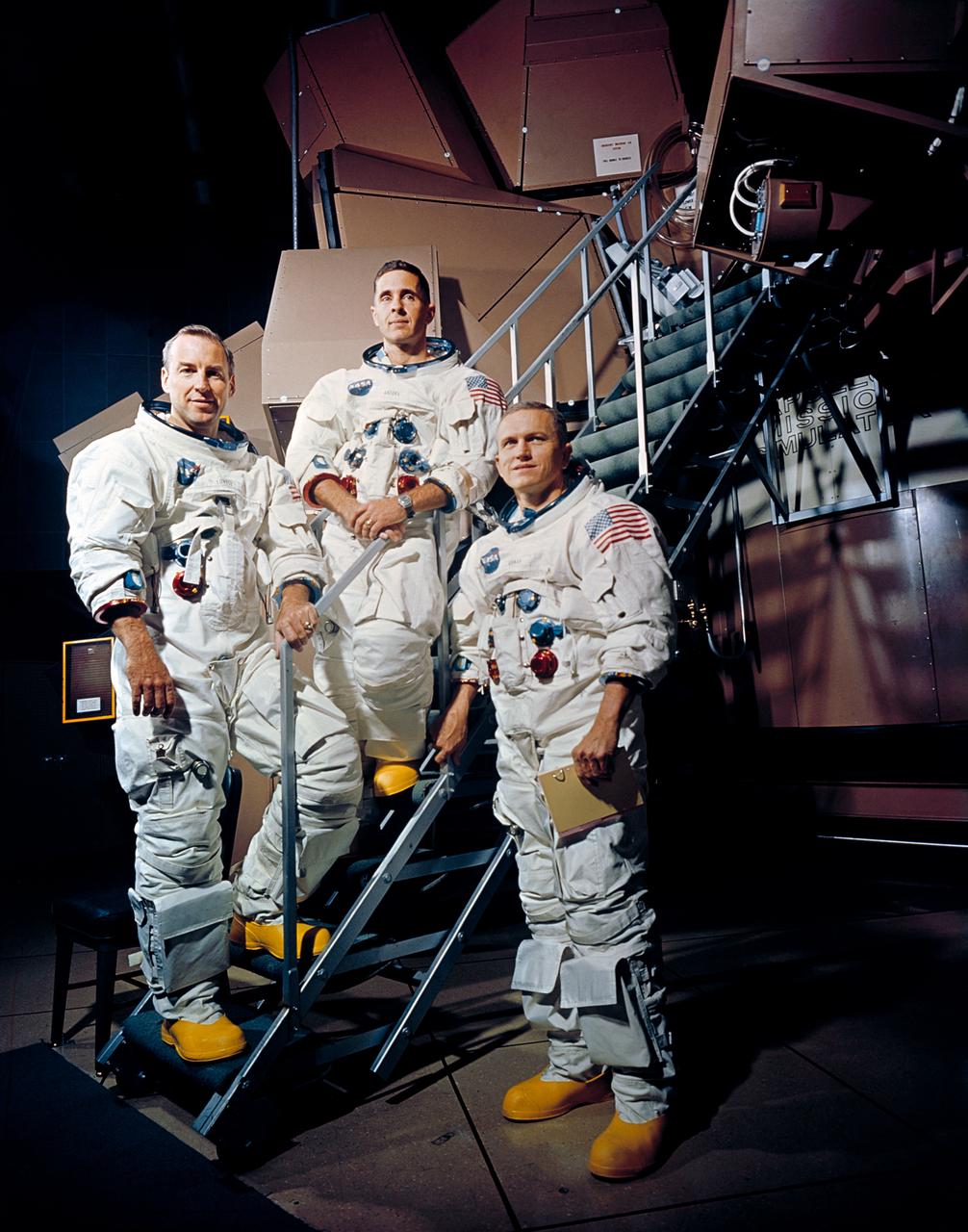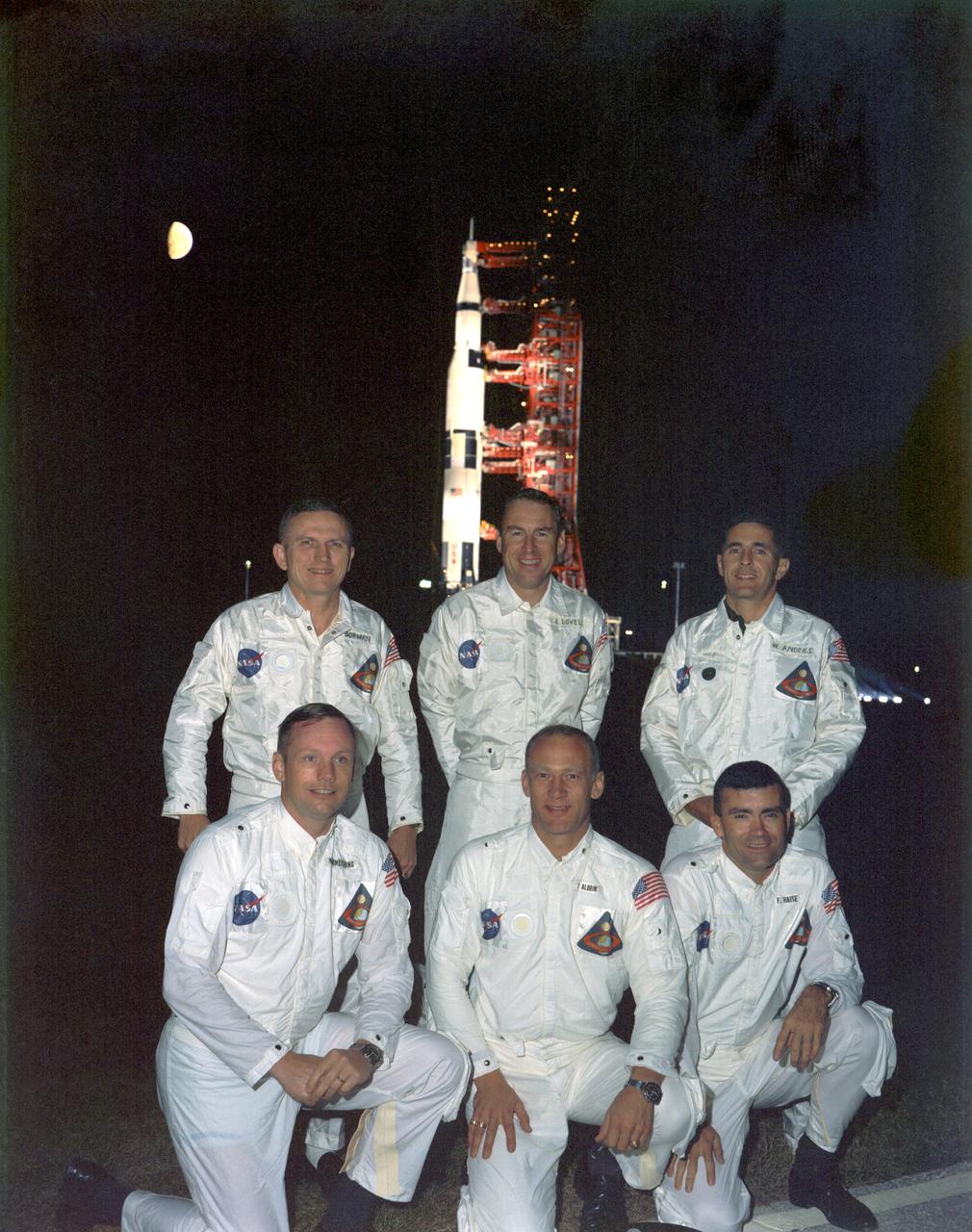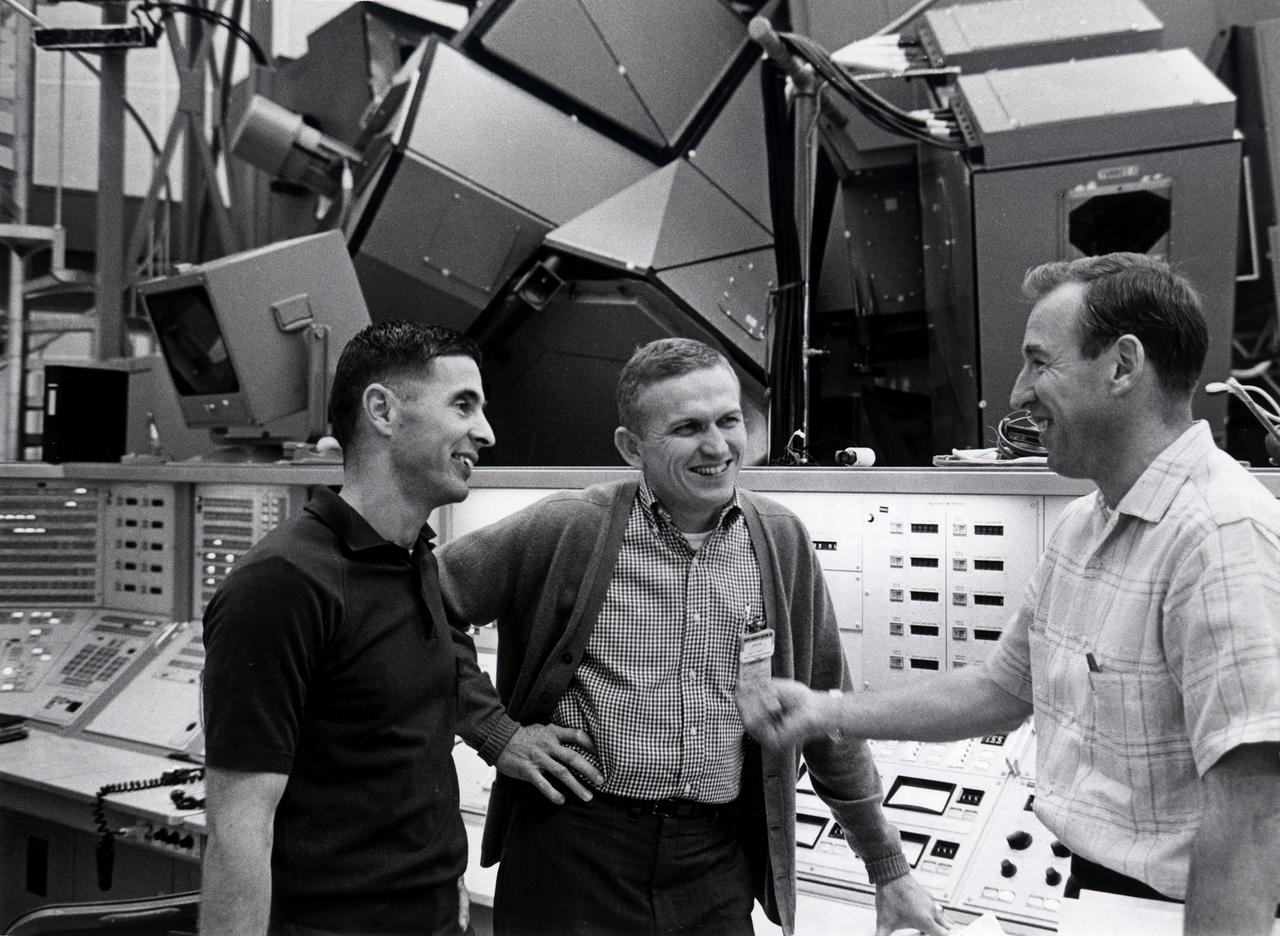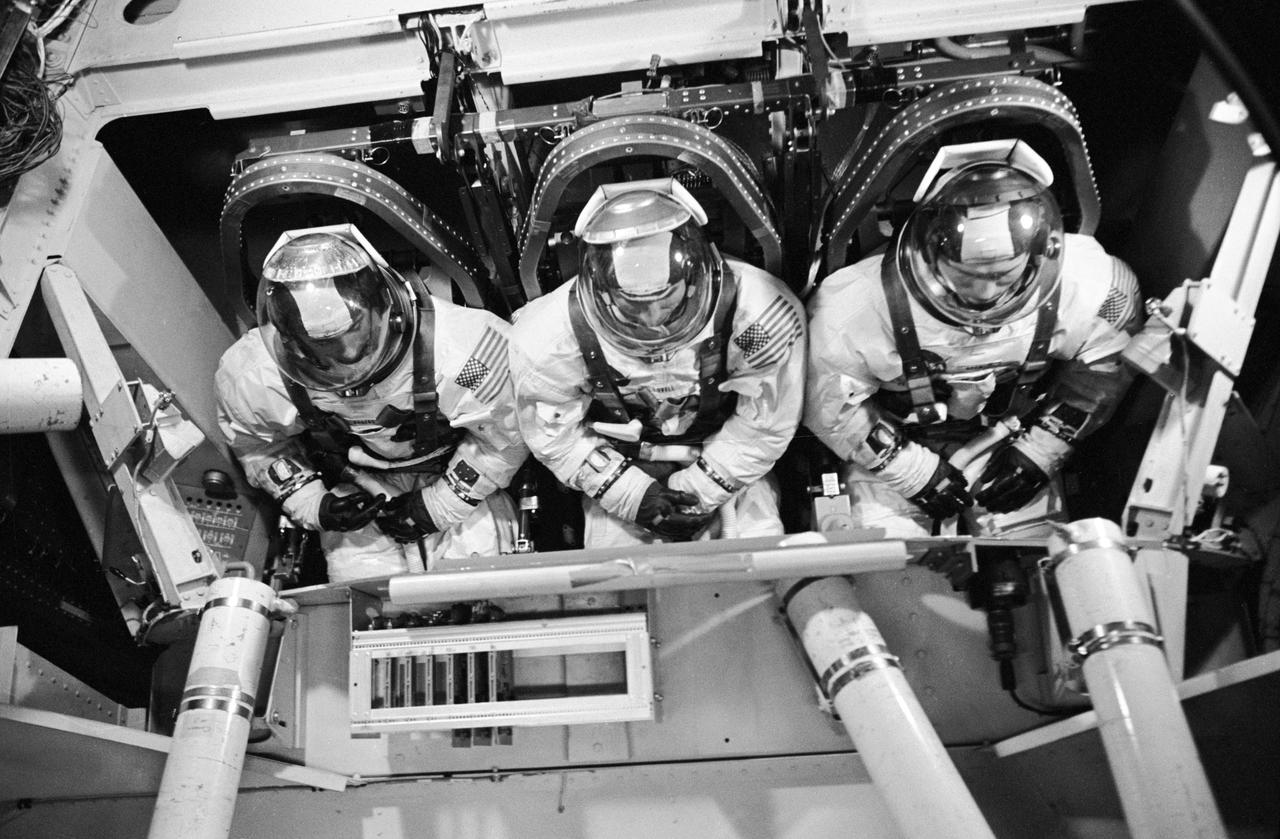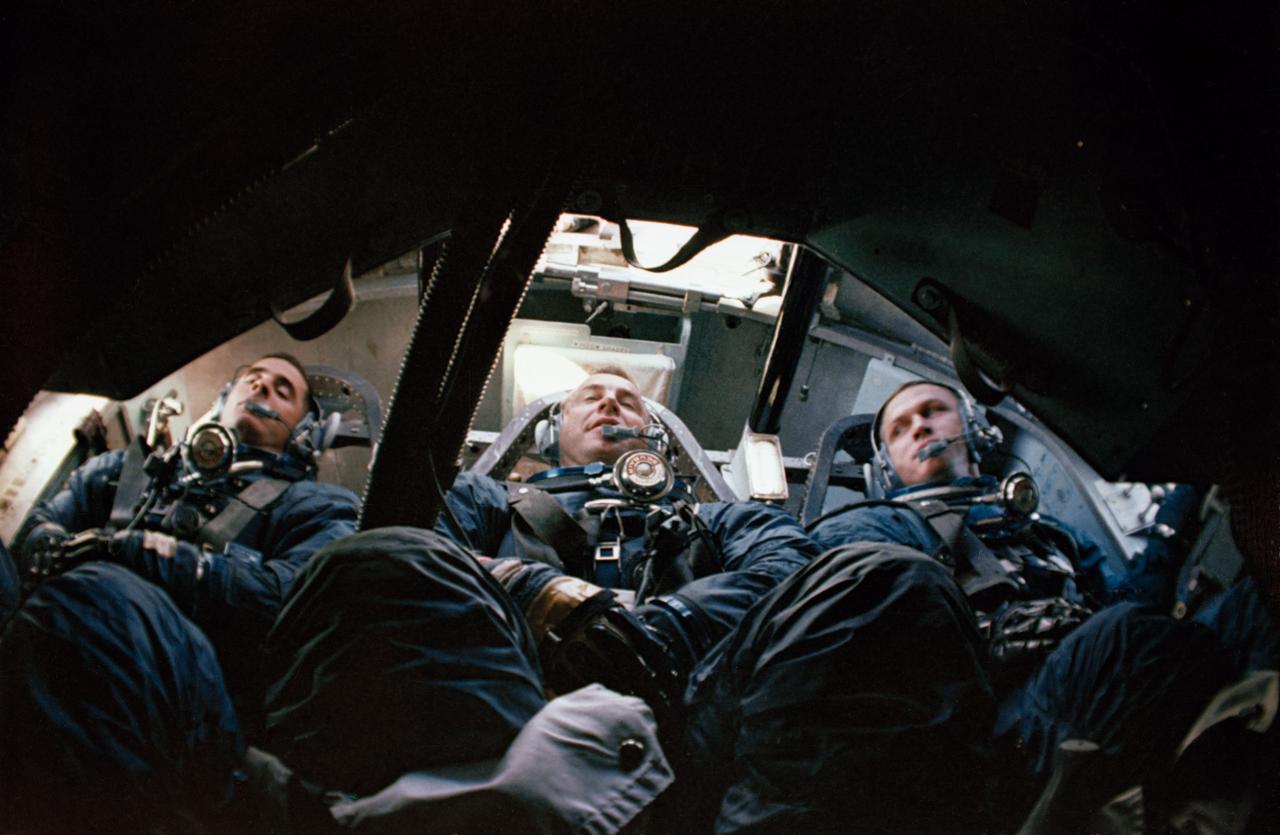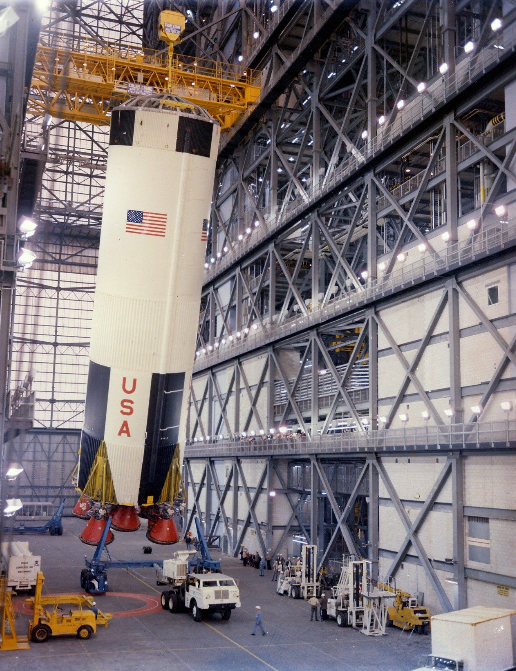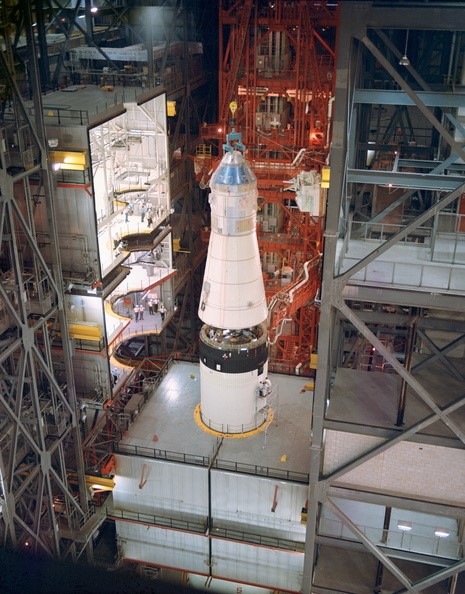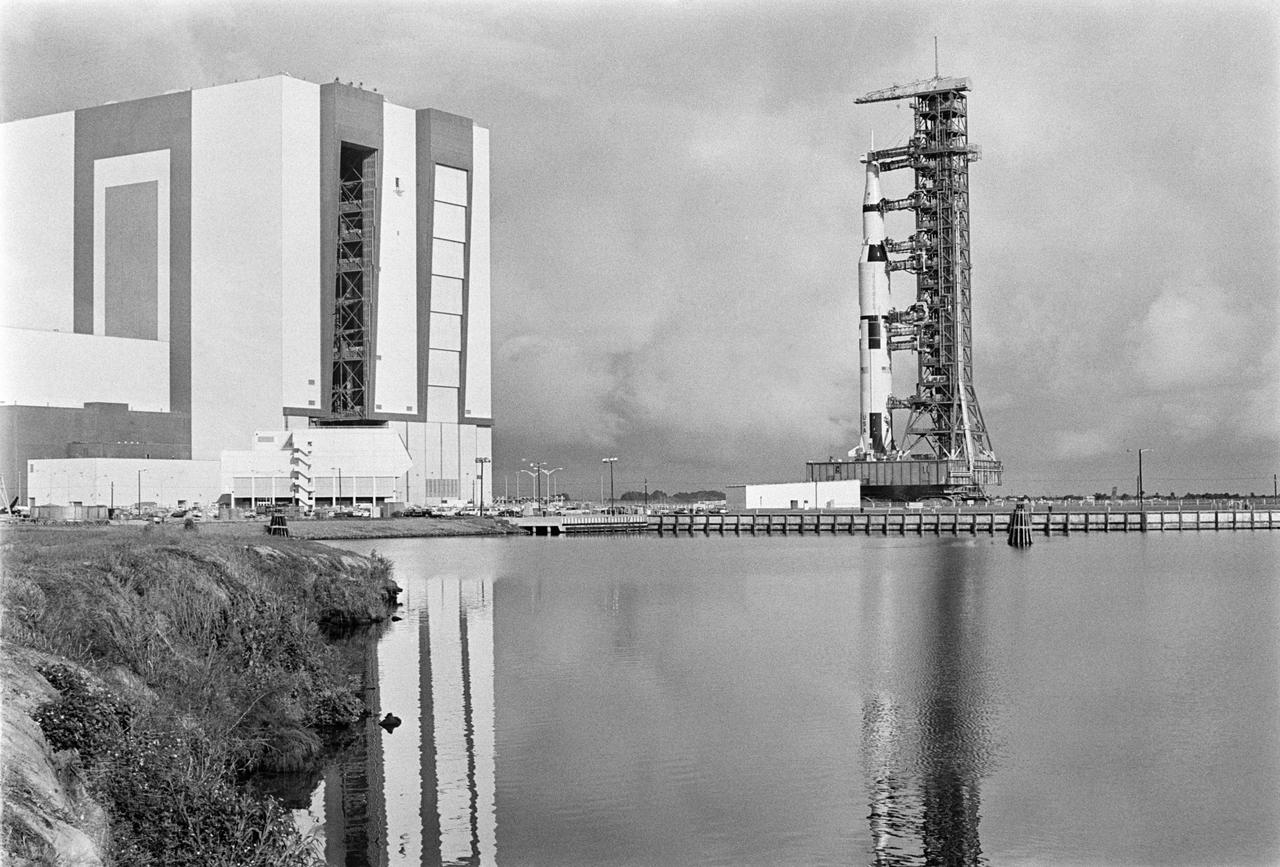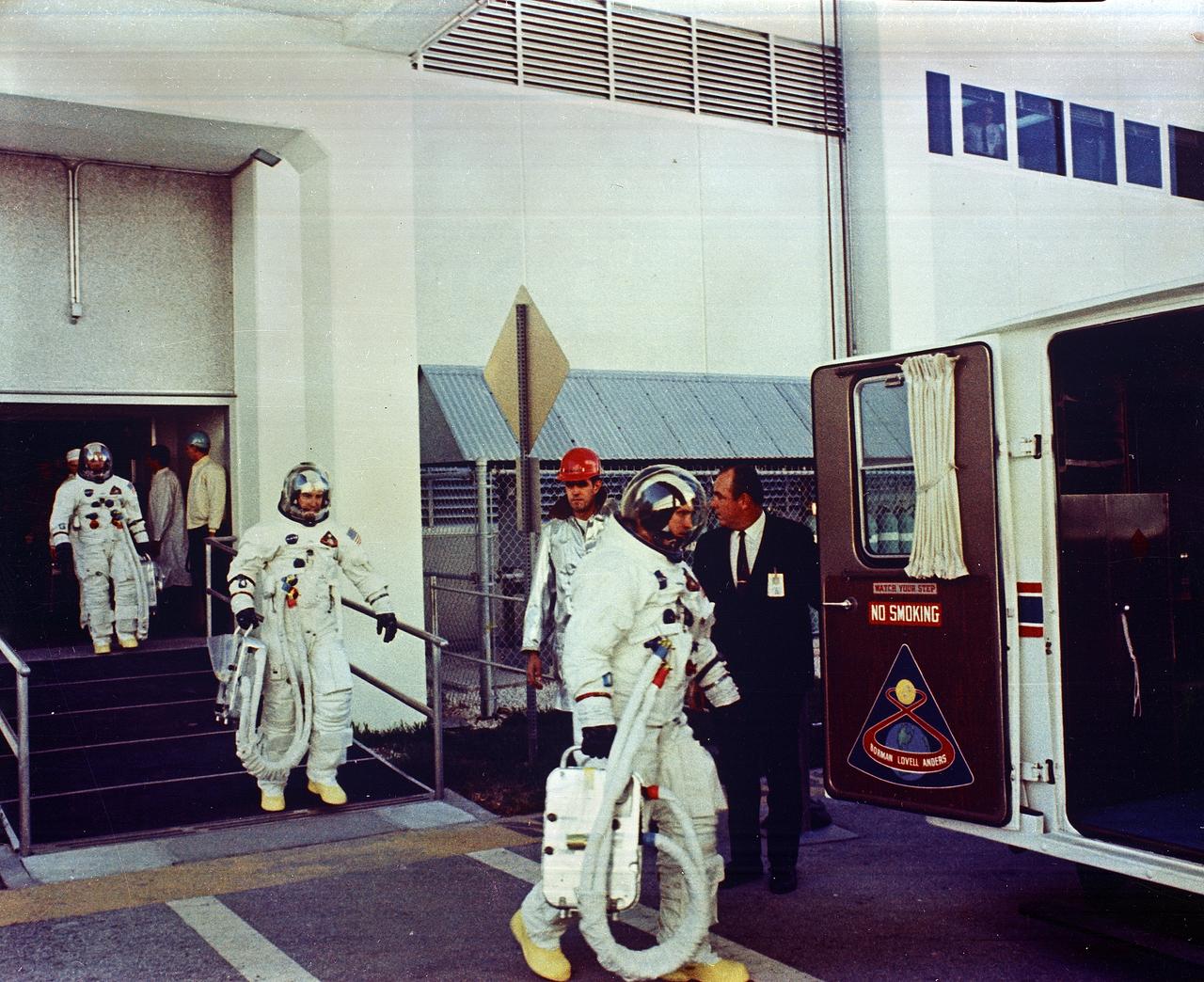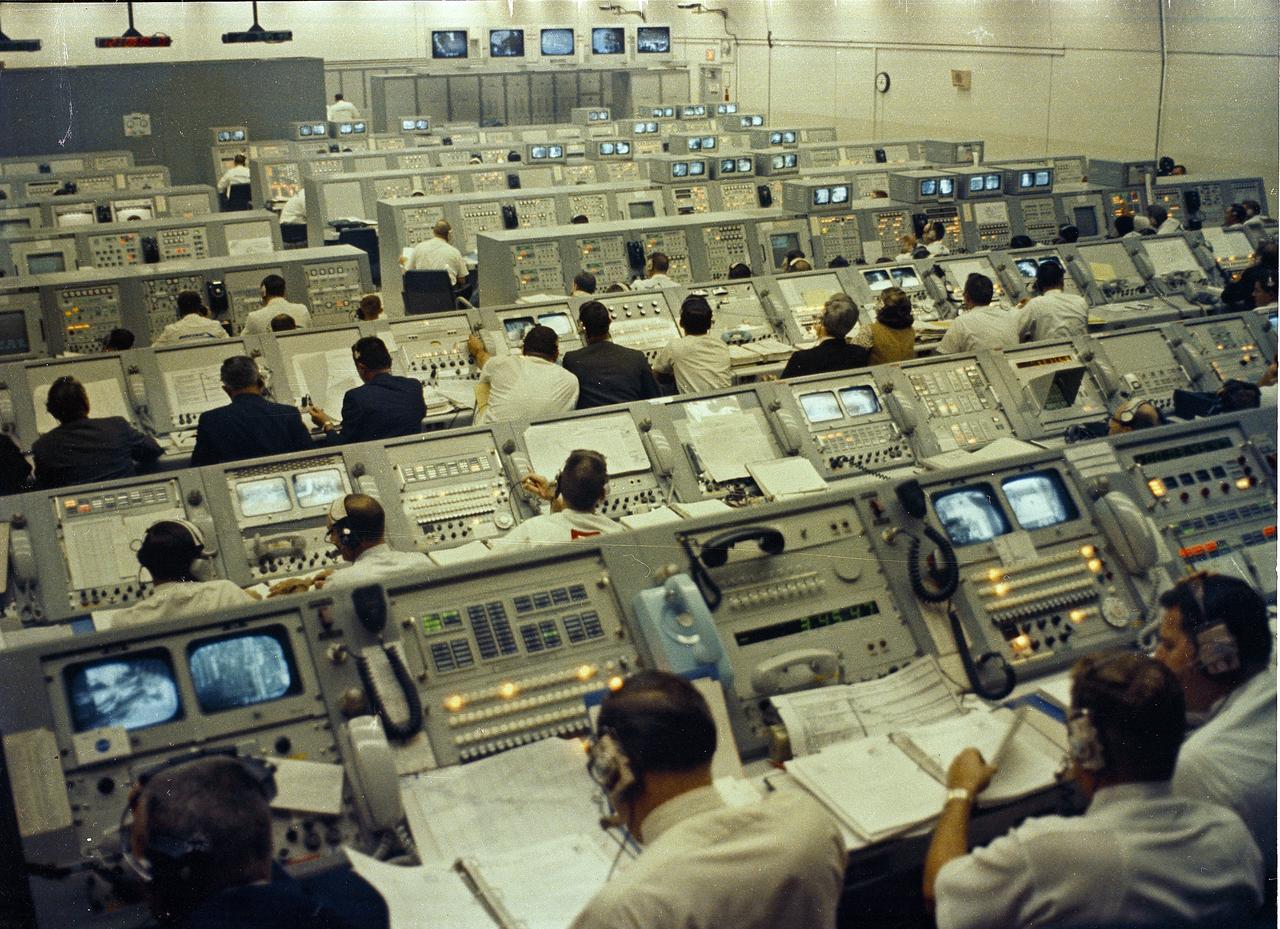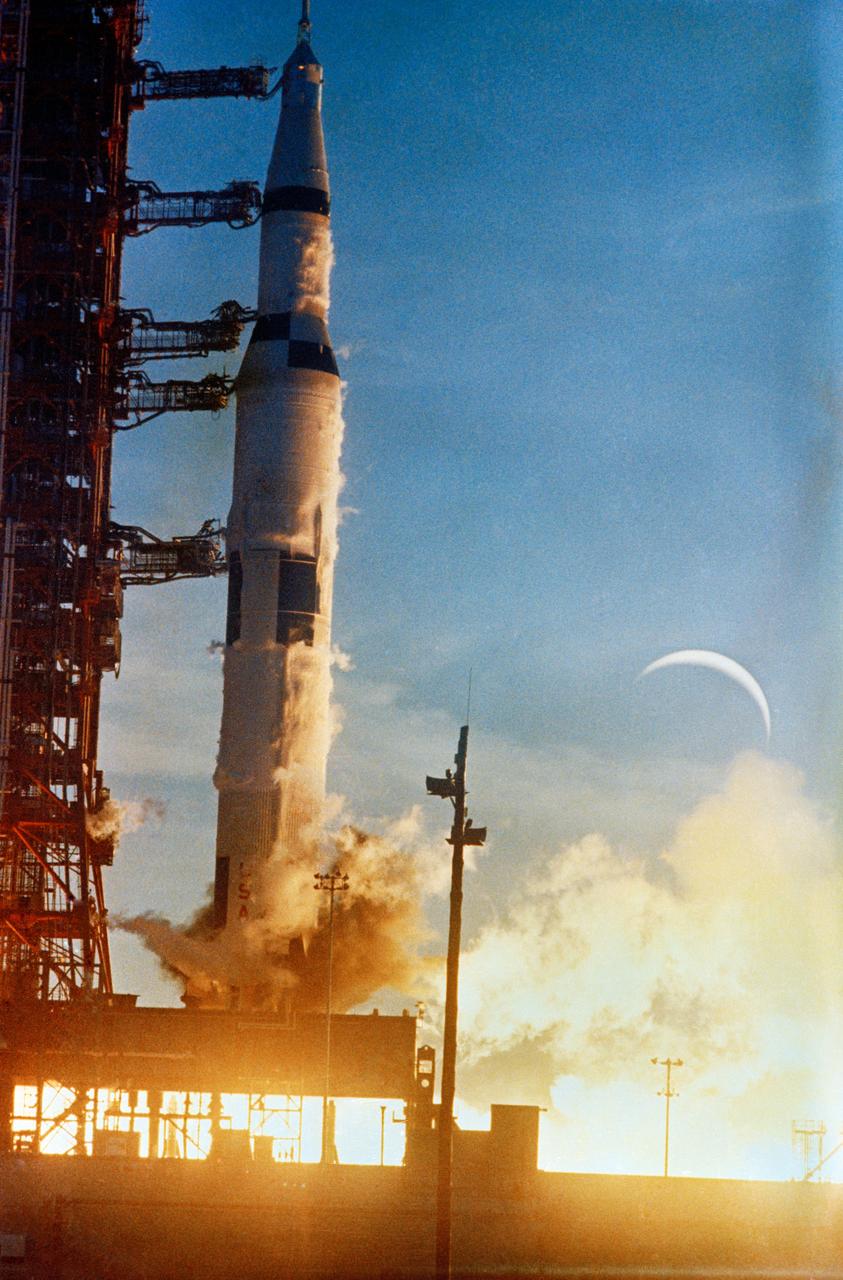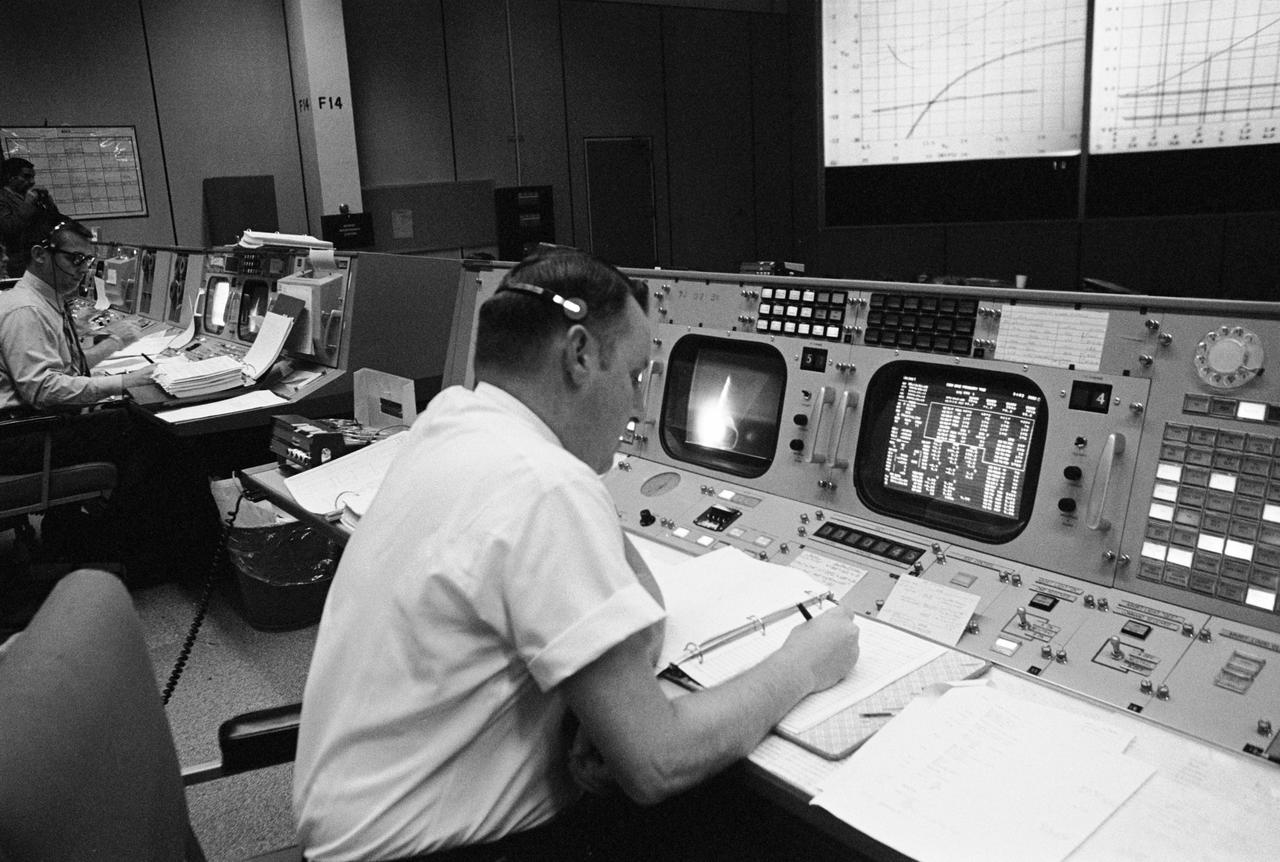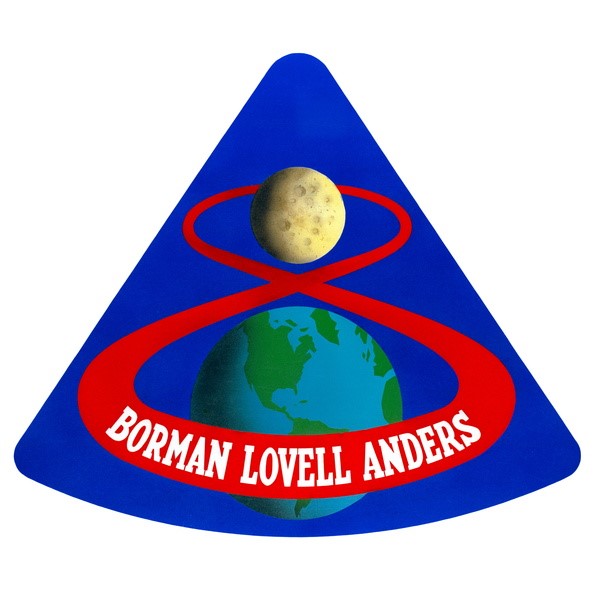Astro Info Service Limited
Information Research Publications Presentations
on the Human Exploration of Space
Established 1982
Incorporation 2003
Company No.4865911
E & OE
Apollo 8 Part 1
In remembrance of astronaut Jim Lovell, who died on 7 August 2025 at the age of 97 (his profile can be found here), we are reproducing (and updating) the in-depth mission report on his third space flight, Apollo 8, that was first published on this website in December 2003, the 35th anniversary of the mission. As with the original publication, this mission report will be presented in four parts.
APOLLO 8 MISSION REPORT |
LAUNCH DATA |
|
|
Launch |
21 December 1968, at 07:51 Eastern Standard Time (EST) |
Launch Site |
Pad 39A, Kennedy Space Center (KSC), Florida, USA |
Launch Vehicle |
Saturn V (SA-503); 3rd launch; 1st crewed launch |
Spacecraft |
Apollo 8 (Command and Service Module (CSM)-103); 2nd crewed Apollo mission; 1st lunar orbital mission |
Spacecraft Mass |
28,902 kg (63,718 lbs) |
|
|
MISSION OBJECTIVE |
To demonstrate the combined performance of the crew, the spacecraft and the mission support team during the first crewed flight of the CSM/Saturn V combination. To demonstrate the performance of nominal and selected back-up lunar procedures. To complete the first crewed lunar orbital flight (10 orbits). |
|
CREW DATA |
Crew Position |
Name |
Mission |
Commander (CDR) |
Frank BORMAN, 40
Colonel, US Air Force |
2nd |
Command Module Pilot (CMP) |
James A. LOVELL, 40
Captain, US Navy |
3rd |
Lunar Module Pilot (LMP)* |
William A. ANDERS, 35
Major, US Air Force |
1st |
*No LM was carried on this flight |
Flight Crew |
3 |
Call Sign |
'Apollo 8' |
Back-up Crew |
Neil Armstrong (CDR); Buzz Aldrin (CMP); Fred Haise (LMP) |
EVAs |
None (none planned) |
|
|
MISSION DATA |
Duration |
6 days 3 hours 0 minutes 42 seconds |
Distance Travelled |
Approx 812,500 km (504,864 miles) |
Orbital Data |
Earth Orbits: 1.5 (2 hrs 44 min)
160.2 x 160.8 km (99.5 x 99.9 miles) inclined at 32.5° with a period of 89.19 minutes.
Lunar Orbits: 10 (20 hrs 10 min)
Approx. 96.0 x 97.6 km (59.6 x 60.6 miles) |
Landing |
27 December 1968, at 05:51:42 EST |
Landing Site |
Pacific Ocean; 8.10°N 165.0°W; prime recovery ship: USS Yorktown |
|
|
Part One - Nineteen Hundred and Sixty-Eight
The year 1968 was a difficult one, especially if you were an American. The war in Vietnam was escalating, Robert Kennedy and Martin Luther King had been assassinated and student riots were adding to a growing social unrest. For NASA and the American space programme, it had been a long and hard climb back to the successes of 1961-1966 with the Mercury and Gemini programmes. The effort to recover after the tragic Apollo 1 fire of January 1967 that claimed the lives of three astronauts had seen the launch of two uncrewed Saturn Vs in November 1967 and April 1968; the uncrewed test flight of the first Lunar Module (LM) in Earth orbit in January 1968; and the first crewed flight of the Apollo Command and Service Module (CSM) - also in Earth orbit - during the 11-day Apollo 7 mission in October 1968.
The Soviet Union was also recovering from loss, of cosmonaut Vladimir Komarov aboard Soyuz 1 in April 1967. They accomplished two uncrewed dockings of Soyuz spacecraft before finally flying the crewed Soyuz 3 mission, also in October 1968, to crew-rate the new spacecraft. There were also rumours of a pending Soviet circumlunar mission, using the Zond variant of Soyuz that was planned to take cosmonauts to the Moon before the Americans on Apollo.
So it was with this background that the mission of Apollo 8 salvaged a tough year, ending it on a high note. Why? Because for the first time, humans travelled away from Earth over 400,000 km (250,000 miles) across space towards the Moon, spending over 20 hours (10 orbits) circling our nearest neighbour before making the return flight. Technically, the mission qualified the use of the huge Saturn V rocket for human flight and the Apollo CSM for lunar missions. It also proved that human exploration away from Earth orbit was possible; that a crew could navigate in space; and that the mission could be properly supported by a global tracking network. The fact that the mission was flown over the Christmas period added a human angle that generated global interest. The comments and images beamed back to Earth by the crew underlined a meaningful message at the end of a troubled year and created an everlasting image of the planet Earth floating in space that has become one of the most powerful visions of space flight. It continues to be used even today.
To Go to the Moon
The mission that became Apollo 8 had evolved over several years, as a result of the pad fire, uncrewed test flights, difficulties and delays in preparing hardware, crew reassignments and - to a lesser extent - reaction to what the Soviets were trying to achieve. In early 1967, astronauts Frank Borman, Bill Anders and Mike Collins were in training to take the first crewed Saturn V off the launch pad under the designation Apollo 3. Following the Apollo 1 fire, missions were re-designated in September 1967 into a seven-step sequence that would result in the first crewed lunar landing. Each step was designated a letter (A-G) and would include one or more missions flown under each letter, to achieve the goal set out for that letter before moving on to the next step. Letters 'A' and 'B' were assigned to uncrewed development flights of the Saturn V, Saturn 1B, CSM and LM spacecraft. The 'C' mission was the first crewed Earth-orbital flight of the Apollo. The 'D' mission was a combined Saturn V, CSM and LM development flight in Earth orbit. The 'E' mission was to test the Saturn V/CSM/LM combination 'in high Earth orbit', while the 'F' mission would take the spacecraft out to deep space. This would probably be to lunar orbit in a full evaluation of the CSM and LM before the lunar landing attempt was tried on the 'G' mission.
Borman's crew was assigned to the 'E' mission, flying the third crewed Apollo and probably the second crewed Saturn V. The mission would test the two spacecraft on a high-apogee orbital mission lasting about 11 days and the crew trained for this flight over the next 12 months. The mission would take CSM-104 and LM-4 out to an apogee of around 6,440 km (4,000 miles), setting a new altitude record (surpassing the 1,368 km (850 miles) of Gemini 11 in September 1966). Borman and Anders would transfer to the LM and separate from Collins in the CSM to complete a series of undocked tests and manoeuvres, similar to what the 'D' crew (Jim McDivitt, Dave Scott and Rusty Schweickart) were to perform beforehand in Earth orbit.
In April 1968, this 'E' mission was re-designated as Apollo 9, the third crewed Apollo mission flying the fourth Saturn V. However, preparations on LM-3 for the Apollo 8 flight (McDivitt's crew) revealed that it would not be ready until December 1968 and would probably delay the mission into February 1969. This would have a knock-on effect in that Borman's LM-4 would not be ready to fly until the spring of 1969 and would push the other missions later into the year, adding further pressure on achieving the lunar landing by December 1969. To mission managers, the flight plan for Mission 'E' seemed to be increasingly complex and over-ambitious, so discussions were held to amend it.
The 'C' crew (Wally Schirra, Donn Eisele and Walt Cunningham) had trained to fly a CSM-only mission in Earth orbit riding a Saturn 1B, so their mission and hardware were ready and remained the same. It was flown as Apollo 7 in October 1968. The Saturn V and CSM were also ready for McDivitt's flight, but news came down from the Cape that no LM would fly in 1968. McDivitt's crew had trained for over 30 months to fly the first crewed LM and, not wishing to waste that training, McDivitt agreed to drop one mission and fly the LM test flight as Apollo 9. This meant that Borman's crew would move up and fly a deep-space CSM test as Apollo 8. But to what distance?
The original idea was to send Apollo 8 on a looping trajectory around the back of the Moon and straight back to Earth (called circumlunar). This was also the trajectory the Soviets were preparing for their Zond missions. A circumlunar trajectory would be a significant step towards the landing goal and would eliminate the risk of using the braking engine on the Service Module (SM) to allow capture into orbit and then gamble on it working to break free of lunar orbit so that the crew could return home. Arguments for and against this continued, but it was clear that at some point NASA would have to place an Apollo spacecraft in lunar orbit and demonstrate that the Service Propulsion System (SPS) could bring it out again.
Trying a lunar orbital flight on Apollo 8 with the CSM would eliminate several steps in the flight manifest and enable hardware to be reassigned to other missions down the line, if the mission worked. It meant placing men around the Moon in 1968 instead of 1969 and it was a huge gamble. The CSM had only flown once before with a crew on board, in Earth orbit. The Saturn V had only flown twice before, both without a crew and both with problems that had to be overcome before the next flight. The world-wide tracking and data network was untested with a crewed spacecraft in deep space, while the re-entry speeds from the Moon were much higher than on any other missions. Most importantly, the SPS had to work to place the vehicle in lunar orbit and then again to break free for the flight home.
Crew-rating the Saturn V and aiming for the Moon in one mission was a bold step, but confidence in the hardware, the infrastructure and the crew meant that the decision was taken in August 1968, four months before the planned launch date. Trajectory analysts worked overtime to perfect the navigational and computer programmes for the Saturn V and spacecraft. The SPS from CSM-103, intended for use in Earth orbit, was exchanged with one intended for lunar missions and the crew took additional training sessions in lunar surface landmark recognition and navigation.
Reaching the Moon was not simply a case of launching the Saturn and pointing the nose of the spacecraft at the target. It would take three days to fly there, which meant that by the time of arrival the Moon would have shifted in its orbit. So the spacecraft would have to be aimed at the point in the Moon's orbit where it would be three days after launch, with the spacecraft intersecting that point some 112 km (70 miles) ahead of the Moon. It would be even trickier for the return to Earth. There was a defined corridor in the atmosphere that the spacecraft would have to aim for to ensure a safe re-entry and landing in the Pacific Ocean. Coming in too shallow would mean skipping off the atmosphere like a stone across water into a high orbit from which it would be impossible to recover the crew. The astronauts in the CM would eventually die from lack of oxygen. Coming in too steep would see the spacecraft burn up in the atmosphere, so the trajectory had to be just right. The entry window lay 129 km (80 miles) above the Earth and, at 40,230 kph (25,000 mph), it was just 644 x 42 km (400 x 26 miles). To put this into some sort of perspective, it would be like holding a single piece of A4 printing paper edge-on at one end of a football field, throwing a dart at it from the other end of the field and slicing through the paper cleanly at the first attempt. That was the precision required for an Apollo re-entry from lunar distance.
However, if this mission succeeded, NASA could seriously consider aiming for the surface of the Moon during the summer of 1969. If a number of factors came together, including crew readiness, hardware preparations, weather, lighting conditions and no serious in-flight problems, Apollo 9 would fly in February or March 1969 to test the LM in Earth orbit and perform an Extra-Vehicular Activity (EVA, or spacewalk) test of the Apollo lunar spacesuit. Apollo 10 would then fly the LM to within nine miles of the lunar surface in April or May, allowing Apollo 11 to attempt the first landing in June or July. This would still allow time for Apollo 12 to fly in August or September and Apollo 13 in October or November, but it all hinged upon the success of Apollo 8. As Wernher von Braun observed at that August meeting, once the decision to place a crew on the Saturn V had been made, "it did not matter how far you went". For Apollo 8, this meant the Moon.
Acting Administrator Dr. Thomas O. Paine had announced after the splashdown of Apollo 7 in October that, "The final decision on whether to send Apollo 8 around the Moon would be made after a thorough assessment of the total risks involved and the total gains to be realised in this next step towards a manned lunar landing. We will fly the most advanced mission for which we are fully prepared that does not risk the safety of the crew." After the agency had assessed the pros and cons, the announcement was made on 12 November 1968. Apollo 8 would indeed fly a lunar orbital mission, with a launch no earlier than 21 December.
Launch Preparations
During the build-up to the mission, the hardware arrived at the Cape and the crew continued to prepare for their flight into history. Commander Frank Borman and LMP Bill Anders (now without an LM to fly) would be joined by Jim Lovell as CMP from the back-up crew, since Mike Collins had been medically grounded in July and would not be back on flight status until the following year.
The launch vehicle destined to take them out towards the Moon was designated Saturn V No. 503. It had originally been scheduled to fly the third uncrewed Saturn V launch, but the success of the first two Saturn V flights led to the decision to fly it with a crew, so its second stage had to be returned to the Mississippi Test Facility for 'man-rating' upgrades.
The CSM was designated CSM-103 and since the LM would not fly, it was decided in August to add a 9,026 kg (19,900 lbs) LM Test Article (LTA-B) inside the Spacecraft Lunar Adapter (SLA) atop the third stage, to provide the mass equivalent of an LM as it would be on a lunar landing-type mission. This would provide performance data on the Saturn V carrying a CSM/LTA. As there was only one spacecraft flying this mission there was no need for separate radio identification, so the mission call sign became simply 'Apollo 8'.
Since this was a lunar mission, it would have to launch at a particular time of day within a few days of any month, to achieve a daylight pass over lunar landing sites for photographing the areas shortlisted for the landing attempt in 1969. Other factors in choosing the 'launch window' included the inclination around the Moon, the inclination for a free-return trajectory (if the SPS engine failed, the spacecraft would simply fly around the back of the Moon and head home without being 'captured' in lunar orbit, an added redundancy on this first trip away from Earth) and the levels of propellant aboard the spacecraft. Launch and splashdown lighting conditions were also a factor. This meant that the first launch window was 20-27 December 1968 and then into January 1969. It was decided that 21 December 1968 would be the best date for the first launch attempt.
The elements of the Apollo 8/Saturn V vehicle arrived at the Cape at different times. The Saturn stages had actually arrived at the Kennedy Space Center (KSC) a full year before the mission was flown. The S-II second stage arrived at KSC on 24 December 1967, followed on 27 December by the S-1C first stage and then the S-IVB third stage on 30 December. The Instrument Unit arrived on 1 April 1968. A programme of stage inspection and testing was followed by vertical stacking in High Bay 1 of the Vehicle Assembly Building (VAB) atop Mobile Launcher PLatform 1 (MLP-1). The stacking of the Saturn V was completed by 14 August 1968. The Command and Service Modules arrived at the Cape in separate containers on 12 August 1968 and were mated together ten days later. After combined systems and altitude chamber tests, the spacecraft was moved to the VAB for mating with the Saturn V on 7 October. Two days later, the Apollo 8/Saturn V stack was moved by crawler transport from the VAB out to the pad at Launch Complex 39A, the rollout being witnessed by the prime crew.
During the next two months, a series of tests were completed on the spacecraft and launch vehicle to ensure their compatibility with each other and with the launch pad facilities. A flight readiness test was completed on 11 November, followed by a Countdown Demonstration Test (CDT) on 5 December. On Sunday 15 December 1968, electrical power was turned on and the Saturn V came alive as the countdown started. The Terminal Countdown started at the T-28 hour mark (19 December). From that point the countdown proceeded smoothly, including a planned six-hour hold at T-9 hours. Liquid oxygen (LOX) for the spacecraft's environmental control and fuel cell systems was replaced during the countdown when it was found that the LOX was contaminated with nitrogen. When the countdown resumed after the hold, all events were on schedule. After another planned hold of 60 minutes, the countdown resumed at T-3 hours 30 minutes. As the crew entered the spacecraft at T-2 hours 53 minutes, the weather reports revealed that there would be no impact on the launch.
Launch Phase
At 07:51:00 EST on 21 December 1968, the first crewed flight to the Moon began with the ignition of the Saturn V first stage. Lift-off occurred well within the planned launch window. The crew could feel the rumbling of the giant F-1 engines over 90 m (300 ft) below them as they ignited nine seconds before the launch. For rookie Bill Anders the launch seemed loud and violent, but for veterans Frank Borman and Jim Lovell it seemed more comfortable than the Titan rocket used on a Gemini launch. Borman had likened the Titan launch to riding over a road full of potholes.
They broke the sound barrier in 40 seconds as three pairs of eyes scanned the instruments in front of them. As the G level increased to 4.5, pinning the astronauts into their couches, the spent first stage separated at 2 minutes 34 seconds into the flight and the second stage ignited, propelling the vehicle higher into the atmosphere. At stage shutdown the crew were flung forward against their seat harnesses as the acceleration abruptly stopped, so much so that Anders thought he might carry straight on into the instrument panel. At the ignitiion of the second stage seconds later, the three astronauts slammed back into their couches as the Gs increased once again.
At 3 minutes 9 seconds the launch escape tower jettisoned, giving the crew their first clear view out of the windows, although their concentration was firmly inside the spacecraft. The second stage shut down at 8 minutes 44 seconds, separating just one second later and clearing the third stage. That stage ignited at 8 minutes 45 seconds and burned for 2 minutes 40 seconds before shutting down, placing the CSM/SLA/S-IVB configuration in a 181.5 x 191.3 km (98.0 x 103.3 nautical miles) orbit just 11 minutes and 35 seconds after leaving the pad. For the next 1.5 orbits the spacecraft, travelling at 28,163.5 kph (17,500 mph, or 8 km (5 miles) per second) was checked out by the crew and flight controllers in Houston, each giving a 'Go/No Go' decision on whether to proceed. All confirmed that the vehicle, crew and mission were in a 'Go' state.
For Anders, it was hard not to look out of the window at Earth sailing by below him. Borman had told his crew to concentrate on the events ahead (Trans-Lunar Injection or TLI) and not gaze out of the window because they had a tight deadline and a lot to do. Whenever Borman was not looking, however, Anders sneaked a quick peek outside. This was his first trip and he was not sure if he would be getting another chance, whereas his colleagues had been here before. Both Borman and Lovell had circled the planet for 14 days on Gemini 7 in 1965, going around the world every 90 minutes. Lovell had done so again on the four-day trip of Gemini 12 in 1966. Anders wished they could linger for a while and then go to the Moon, but he realised you cannot have it all. All too soon, at 2 hours 50 minutes 30 seconds into the mission, the S-IVB was re-ignited, boosting the vehicle out of Earth orbit and towards the Moon. The first crewed TLI manoeuvre was completed 5 minutes and 19 seconds later. At almost 38,900 kph (24,171 mph), Apollo 8 and its three astronauts were heading for deep space. The first human trip to the Moon had begun.
The Apollo 8 mission emblem makes good use of the iconography to sum up the objective of the mission and highlight the crew that would carry it out.
The Apollo 8 crew shown standing beside the Apollo Mission Simulator at KSC, Florida. (L to r) CMP Jim Lovell, LMP Bill Anders and CDR Frank Borman.
Another image of the Apollo 8 Prime crew, which also includes their back-ups. The Saturn V stack is seen in the background of this night shot, as is the mission's target in the top left corner. (Standing l to r) The prime crew of Borman, Lovell and Anders. (Kneeling l to r) the back-up crew of Neil Armstrong (CDR), Buzz Aldrin (CMP) and Fred Haise (LMP).
Apollo 8 astronauts Anders, Borman and Lovell share a light-hearted moment during a pause in training at the mission simulator.
The Apollo 8 crew are seated in the gondola during centrifuge training in the Flight Acceleration Facility at MSC (later JSC) in Houston. (l to r) Anders, Lovell and Borman.
The Apollo 8 astronauts Anders, Lovell and Borman are inside the Apollo Boilerplate 1102A capsule about to undergo water egress training.
The first stage of the Saturn V is lifted inside the transfer aisle of the Vehicle Assembly Building (VAB) at KSC, ready to place it on the mobile launcher that would carry the completed stack out to the launch pad.
With the rest of the stack assembled, the Apollo 8 configuration CSM and Spacecraft Adapter are lowered onto the top of the S-IVB stage in the VAB at KSC.
The Apollo 8 stack and mobile launcher leave the VAB (left) atop a huge crawler-transporter, on a slow journey of just 1.6 kph (1 mph) along the 5.6-km (3.5-mile) crawlerway to Pad A at Launch Complex 39, KSC.
(Front to back) Apollo 8 astronauts Anders, Lovell and Borman are about to board the astronaut van for transfer to the launch pad, where their Saturn V rocket awaits for the historic mission.
The Launch Control Center at the Kennedy Space Center in Florida is a very busy place during launch activities for Apollo 8.
The F-1 engines at the base of the Saturn V ignite to lift the launch vehicle off the pad at 07:51 EST on 21 December 1968, as the mission of Apollo 8 begins its three-day journey to the Moon.
Apollo 8 "Green Team" Flight Director Clifford E. Charlesworth is seated at his console in the Mission Operations Control Room at the Mission Control Center in Houston during the launch of Apollo 8.
This Mission Report is copyright Astro Info Service Limited, 2003, 2025
All images are courtesy of NASA, unless otherwise stated.



